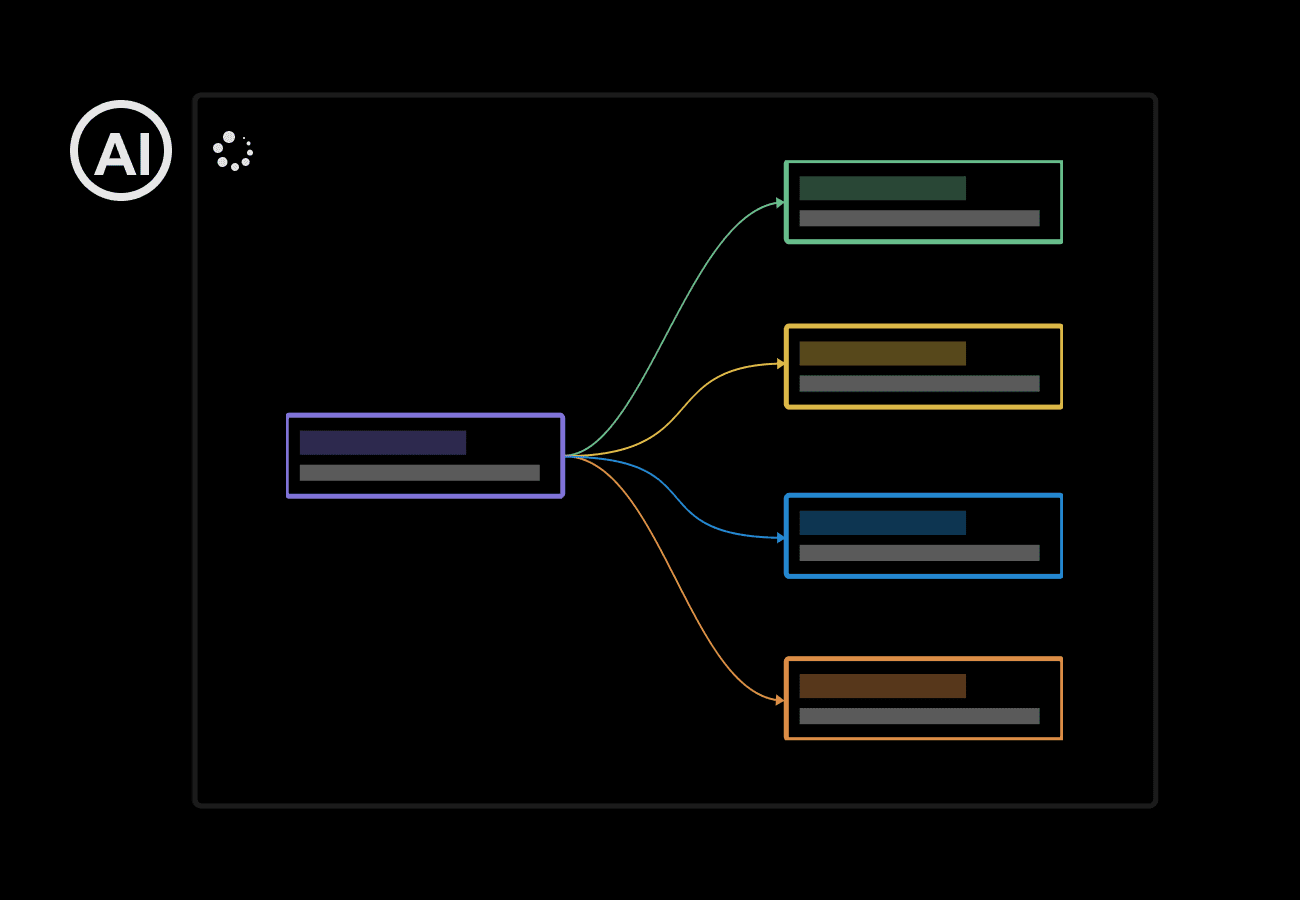









How to create a SWOT Analysis using AI
Easily generate a SWOT analysis with AI in minutes.

Step #1: Input Topic
Type in your business or project details.

Step #2: Edit Content
Refine the AI-generated SWOT analysis.

Step #3: Export and Share
Save as PNG or share via URL.
Why Choose MyMap's SWOT Analysis Maker?
AI-Native
Just chat with AI to create your SWOT analysis - no need to fiddle with tools yourself.
Multiple Format
Upload any file type - our AI uses the content to create your SWOT analysis.

Web Search
MyMap's AI taps into Google and Bing to fetch the most recent info for your SWOT analysis.
Internet Access
Paste any URL and our AI pulls out relevant info for your SWOT analysis.
Collaboration
Team up with coworkers on the same SWOT analysis in real-time.
Share & Export
Save your SWOT analysis as images or PDFs, or just share a link with others.
Use Cases for SWOT Analysis Generator
Entrepreneurs: Evaluating New Business Ventures
Entrepreneurs use the SWOT Analysis Generator to assess potential business ideas. They input their concept, and the AI quickly produces a comprehensive analysis. This allows them to identify key strengths and potential pitfalls before committing resources.
Marketing Teams: Analyzing Campaign Strategies
Marketing professionals utilize the tool to evaluate proposed campaigns. By entering campaign details, they receive an AI-generated SWOT analysis that highlights unique selling points and potential risks. This enables data-driven decision-making and more effective campaign planning.
Students: Preparing Business Case Studies
Business students leverage the SWOT Analysis Generator for academic projects. They input information about a company or industry, and the AI creates a detailed SWOT analysis. This saves time on research and provides a solid foundation for further analysis and presentations.
FAQs about SWOT Analysis Generator
Why Choose MyMap.AI's SWOT Analysis Generator over other tools?
MyMap.AI's SWOT Analysis Generator offers unique advantages. Unlike text-based tools, we create visual SWOT analyses through an AI-powered chat interface, making the process intuitive and effortless. Our tool combines the ease of conversation with the power of AI to generate comprehensive, visually appealing SWOT analyses in minutes.
How can I export my SWOT analysis?
Yes, you can export your SWOT analysis. MyMap.AI allows you to export your completed SWOT analysis as a high-quality PNG image, making it easy to include in presentations, reports, or share with your team.
How can I share the SWOT analysis?
Sharing is simple. You can share your SWOT analysis through a public URL, allowing easy access for team members or stakeholders without the need for them to have a MyMap.AI account.
Is MyMap.AI's SWOT Analysis Generator free to use?
Yes, with limitations. MyMap.AI offers 5 free daily AI credits, allowing you to create SWOT analyses at no cost. For unlimited use and access to premium features, paid plans are available.
How long does it take to generate a SWOT analysis?
Typically 3 minutes. Our AI-powered tool can generate a comprehensive SWOT analysis in about 3 minutes, saving you significant time compared to manual creation methods.
Can I customize the SWOT analysis after it's generated?
Yes, absolutely. After the AI generates your initial SWOT analysis, you can easily edit any of the fields by clicking on them, allowing you to refine and personalize the analysis to your specific needs.
What information do I need to provide to generate a SWOT analysis?
Just a description. Simply enter a description of your company or project, and our AI will use this information to generate a comprehensive SWOT analysis. The more details you provide, the more accurate and tailored the analysis will be.
Can I use this tool for different types of projects or organizations?
Yes, versatile use. Our SWOT Analysis Generator is versatile and can be used for various purposes including business strategy, marketing planning, product management, personal development, and more. It adapts to the context you provide.
How does MyMap.AI ensure the accuracy of the SWOT analysis?
AI + User input. Our AI is trained on vast amounts of business data to provide accurate analyses. However, the quality of the output also depends on the input you provide. You can always refine the AI-generated analysis to ensure it perfectly matches your situation.
Can I save multiple SWOT analyses in my account?
Yes, with paid plans. While free users can create and export analyses, paid subscribers can save multiple SWOT analyses in their account for easy access and future reference.
